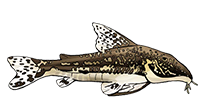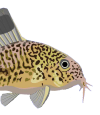In wich habitat of lake Tanganyika does the Phyllonemus Typus live ?
Rocky habitat, littoral habitat .......................
P-Typus habitat
- Phyllonemus
- Posts: 287
- Joined: 31 Jul 2008, 11:44
- My cats species list: 8 (i:2, k:0)
- My aquaria list: 1 (i:0)
- Location 2: Amersfoort, Netherlands
P-Typus habitat
“Google' is not a synonym for 'research'.”
- Birger
- Expert
- Posts: 3870
- Joined: 01 Dec 2003, 05:04
- My articles: 10
- My images: 112
- My cats species list: 49 (i:43, k:0)
- Spotted: 35
- Location 1: Edmonton,Alberta
- Location 2: Canada
Re: P-Typus habitat
Littoral rock rubble habitat ...they stay cooped up all day and then apparently at night can be seen scurrying around I think even over sand but I would think not far from the rocks.
Sid could possibly confirm the over the sand part.
Birger
Sid could possibly confirm the over the sand part.
Birger
Birger
- sidguppy
- Posts: 3827
- Joined: 18 Jan 2004, 12:26
- My articles: 1
- My images: 28
- My aquaria list: 5 (i:0)
- Spotted: 9
- Location 1: Southern Netherlands near Belgium
- Location 2: Noord Brabant, Netherlands
- Interests: African catfishes and oddballs, Madagascar cichlids; stoner doom and heavy rock; old school choppers and riding them, fantasy novels, travelling and diving in the tropics and all things nature.
- Contact:
Re: P-Typus habitat
as far as I know they're found in the intermediate habitat as well, and on the muddy substrate where Triglachromis lives, but they will always have a dugout under a rock and indeed stay in the near of rock outcrops.
but they do swim over sand in between rocks, so the pure rocky biotope where there is no sand at all is less suited than the intermediate habitat
this is also visible in tankbehaviour: Phyllonemus will rarely if ever stray upwards from the tankfloor, they also swim around rocks, but almost never upwards over rocks like Synodontis do.
from all three small Claroteid species I've kept and bred Phyllonemus are by far the most sand orientated.
they prefer dug out caves more than the other two. esp lophiobagrus brevispinis readily accepts breeding caves in a sandfree tank, in an empty shell or a closed PVC pipe without sand in it.
that species is found in the shallower rocky zone, but phyllonemus is a much more intermediate fish than either Lophiobagrus
the shape of the whole fish and the way they use their barbels is another hint: they need open space to use the spread-out leaf ends to the max.
this points at flat open surface ea sand or mud.
but they do swim over sand in between rocks, so the pure rocky biotope where there is no sand at all is less suited than the intermediate habitat
this is also visible in tankbehaviour: Phyllonemus will rarely if ever stray upwards from the tankfloor, they also swim around rocks, but almost never upwards over rocks like Synodontis do.
from all three small Claroteid species I've kept and bred Phyllonemus are by far the most sand orientated.
they prefer dug out caves more than the other two. esp lophiobagrus brevispinis readily accepts breeding caves in a sandfree tank, in an empty shell or a closed PVC pipe without sand in it.
that species is found in the shallower rocky zone, but phyllonemus is a much more intermediate fish than either Lophiobagrus
the shape of the whole fish and the way they use their barbels is another hint: they need open space to use the spread-out leaf ends to the max.
this points at flat open surface ea sand or mud.
Valar Morghulis




